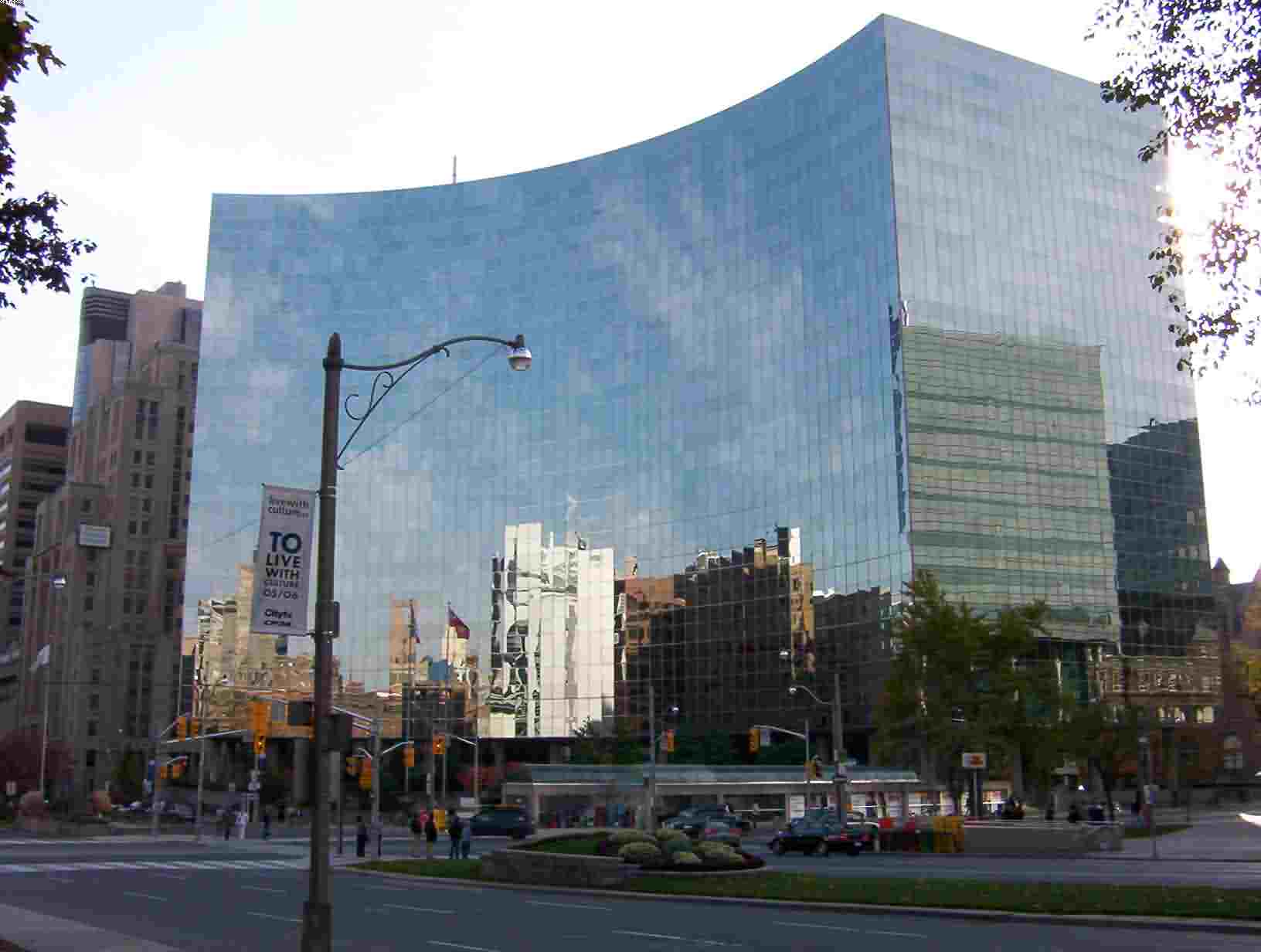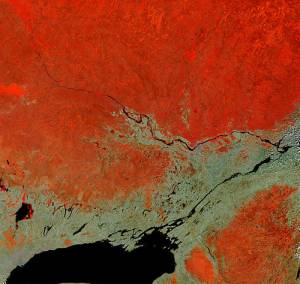|
List Of Power Stations In Quebec
The following page lists electrical generating stations in Quebec, Canada. Quebec produces close to 96% of its electricity through hydropower. The James Bay Project is Quebec's largest generation complex, with an installed capacity of 16,527 megawatt of power, approximately 40% of the province's peak load. Hydro-Québec, the government-owned public utility is the main power generator in the province with 59 hydroelectric facilities located across the province, for a total installed capacity of 34,490 MW. Hydroelectric Owned by Hydro-Québec List of hydroelectric generating stations owned and operated by Hydro-Québec Production. Stations with partial Hydro-Québec ownership Privately owned hydroelectric generating stations List of privately owned hydroelectric generating stations in Quebec, including facilities owned by municipal utilities. Other renewables Wind List of wind farms in Quebec. Biomass List of biomass and waste generating stations in Que ... [...More Info...] [...Related Items...] OR: [Wikipedia] [Google] [Baidu] |
Quebec
Quebec is Canada's List of Canadian provinces and territories by area, largest province by area. Located in Central Canada, the province shares borders with the provinces of Ontario to the west, Newfoundland and Labrador to the northeast, New Brunswick to the southeast and a coastal border with the territory of Nunavut. In the south, it shares a border with the United States. Between 1534 and 1763, what is now Quebec was the List of French possessions and colonies, French colony of ''Canada (New France), Canada'' and was the most developed colony in New France. Following the Seven Years' War, ''Canada'' became a Territorial evolution of the British Empire#List of territories that were once a part of the British Empire, British colony, first as the Province of Quebec (1763–1791), Province of Quebec (1763–1791), then Lower Canada (1791–1841), and lastly part of the Province of Canada (1841–1867) as a result of the Lower Canada Rebellion. It was Canadian Confederation, ... [...More Info...] [...Related Items...] OR: [Wikipedia] [Google] [Baidu] |
Bersimis-2 Generating Station
The Bersimis-2 generating station is a dam and a Run-of-the-river hydroelectricity, run-of-the-river hydroelectricity, hydroelectric power station built by Hydro-Québec on the Betsiamites River, in Lac-au-Brochet, Quebec, Lac-au-Brochet, north of the town of Forestville, Quebec. Construction started in 1956 and the power station was commissioned in 1959 with an initial nameplate capacity of It is the second of two plants built by Hydro-Québec on the Betsiamites. Bersimis-2 was preceded by Bersimis-1 generating station, Bersimis-1, built upstream between 1953 and 1956. With upgrades and further river diversions, Bersimis-2's installed capacity has been increased over time to its current capacity of Geography The Betsiamites River, also known as the Bersimis, is located halfway between the Saguenay River, Saguenay and Rivière aux Outardes (North Shore), Outardes rivers, on the Côte-Nord, north shore of the Saint Lawrence River, downstream from Quebec City. With the exce ... [...More Info...] [...Related Items...] OR: [Wikipedia] [Google] [Baidu] |
Saint-François River
The Saint-François River (, ) is a right tributary of the St. Lawrence River in Quebec, Canada. Its source is Lake Saint-François in Chaudière-Appalaches, southeast of Thetford Mines. It flows southwest towards Sherbrooke, where it changes course northwest towards Drummondville, and finally empties into the Saint Lawrence River near Pierreville. Its total length is 135 miles. Etymology The river is named after Saint Francis Xavier (1506–1552) by the Jesuits, who explored the region under the French regime, and after François de Lauzon.François de Lauzon (1635-1647 or 1648), son of Jean de Lauzon Geography Its course is also unusual, as it flows from northeast to southwest to branch off, halfway through, and continue its course from southeast to northwest. The Saint-François River has its origins in the lake Saint-François and heads southwest towards Sherbrooke. Along the way, it crosses the lakes Lake Aylmer and Lake Louise as well as many municipalities. I ... [...More Info...] [...Related Items...] OR: [Wikipedia] [Google] [Baidu] |
Ontario Power Generation
Ontario Power Generation Inc. (OPG) is a Crown corporations of Canada, Crown corporation and "government business enterprise" that is responsible for approximately half of the electricity generation in the province of Ontario, Canada. It is wholly owned by the government of Ontario. Sources of electricity include nuclear power, nuclear, hydroelectric, wind power, wind, natural gas, gas and biomass. Although Ontario has an open electricity market, the provincial government, as OPG's sole shareholder, regulates the price the company receives for its electricity to be less than the market average, in an attempt to stabilize prices. Since 1 April 2008, the company's rates have been regulated by the Ontario Energy Board. In June 2019, it was announced that a new corporate campus would be built in Clarington, Ontario, that will also house Ontario Power Generation's headquarters. In February 2023, it was announced that OPG would instead purchase the former head office building of Gen ... [...More Info...] [...Related Items...] OR: [Wikipedia] [Google] [Baidu] |
Ontario
Ontario is the southernmost Provinces and territories of Canada, province of Canada. Located in Central Canada, Ontario is the Population of Canada by province and territory, country's most populous province. As of the 2021 Canadian census, it is home to 38.5% of the country's population, and is the second-largest province by total area (after Quebec). Ontario is Canada's fourth-largest jurisdiction in total area of all the Canadian provinces and territories. It is home to the nation's capital, Ottawa, and its list of the largest municipalities in Canada by population, most populous city, Toronto, which is Ontario's provincial capital. Ontario is bordered by the province of Manitoba to the west, Hudson Bay and James Bay to the north, and Quebec to the east and northeast. To the south, it is bordered by the U.S. states of (from west to east) Minnesota, Michigan, Ohio, Pennsylvania, and New York (state), New York. Almost all of Ontario's border with the United States follows riv ... [...More Info...] [...Related Items...] OR: [Wikipedia] [Google] [Baidu] |
Chats Falls Generating Station
Chats Falls (in French: ''Chute des Chats'', meaning "Cat Falls") were a set of waterfalls on the Ottawa River, near Fitzroy Harbour, Ontario, and Quyon, Quebec, Canada. A hydroelectric generating station is now located here, owned and operated jointly by Hydro-Québec and Ontario Power Generation. It lies within the cities of Ottawa, Ontario and Pontiac, Quebec. History Prior to the construction of the dam and power generating station, the Chats Falls was a waterfall with a 10.7 metre (35 feet) drop in the river, and consisted of a series of chutes running from what is now the eastern end of the dam all the way to the westernmost corner of Pontiac Bay (). In their natural state the Chats Falls were a tourist attraction. In the years leading up to World War One it was fairly common to see large steam boats (paddle wheelers) heading up river with their decks full of sightseers. In 1786, a homestead was built on what is known today as Indian Point on the northern end of Pontiac ... [...More Info...] [...Related Items...] OR: [Wikipedia] [Google] [Baidu] |
Rouge River (Quebec)
The Rouge River (, , ) is a river flowing in the Laurentides, in the municipality of Grenville-sur-la-Rouge, in the Argenteuil Regional County Municipality, in the administrative region of Laurentides, in the west of Quebec, in western Quebec, Canada. This river takes its source at Lac de la Fougère and flows south to empty into the Ottawa River near Pointe-au-Chêne and flows north of Mont Tremblant, of which it is a tributary of the left bank. It is in the Laurentides, about halfway between Ottawa and Montreal. Its name is derived from the reddish tint of its sandbanks. The river is a popular destination for whitewater rafting. Its last 10 kilometres are renowned for rafting. It is the main body of water in an area comprising hills, valleys, lakes, and waterfalls. Communities * Bell Falls * Rivington * Harrington * Arundel * Huberdeau * Brébeuf * Lac-Duhamel * Lac Lamoureux * La Conception-Station * Daoust * Marchand * L'Annonciation * Rivière-Rouge * Petit-La ... [...More Info...] [...Related Items...] OR: [Wikipedia] [Google] [Baidu] |
Gatineau River
The Gatineau River (, ) is a river in western Quebec, Canada, which rises in lakes north of the Baskatong Reservoir and flows south to join the Ottawa River at the city of Gatineau, Quebec. The river is long and drains an area of . Toponomy According to the ' (1895), the land-surveyor Noël Beaupré wrote an official report on the river on February 3, 1721, but without naming it, leaving it unclear if its current name was in use in the 18th century. There are two hypotheses to explain the origin of the river's name. It would be either of indigenous origin or of French origin: # The name of the river and the city would come from the Anishinaabemowin (language of the Algonquin Anishinaabeg) Tenagatino Zibi, according to the elders of Kitigan Zibi. # In his 1889 article published in the ''Echo de la Gatineau'', Benjamin Sulte wrote: "One hundred years ago, the Gatineau family was extinct, or thereabouts; it is hardly likely that we waited for its disappearance to consecrate the m ... [...More Info...] [...Related Items...] OR: [Wikipedia] [Google] [Baidu] |
Carillon Generating Station
The Carillon generating station (in French: ''centrale de Carillon'') is a hydroelectricity, hydroelectric power station on the Ottawa River near Carillon, Quebec, Carillon, Quebec, Canada. Built between 1959 and 1964, it is managed and operated by Hydro-Québec. It is a Run-of-the-river hydroelectricity, run-of-river generating station with an installed capacity of , a head of , and a reservoir of . The dam spans the river between Carillon and Pointe-Fortune, Quebec. Upon completion, the dam raised the water level by over at Carillon and over at Grenville, Quebec, Grenville. This inundated the rapids of Long-Sault on the Ottawa River, transforming them into calm (deeper) water. The dam also includes a modern lock that facilitates traffic on the Ottawa River, superseding the Carillon Canal. See also *List of crossings of the Ottawa River *List of hydroelectric stations in Quebec References External links * Hydro-Québec English Web page Dams completed in 1964 Ene ... [...More Info...] [...Related Items...] OR: [Wikipedia] [Google] [Baidu] |
Ottawa River
The Ottawa River (, ) is a river in the Canadian provinces of Ontario and Quebec. It is named after the Algonquin word "to trade", as it was the major trade route of Eastern Canada at the time. For most of its length, it defines the border between these two provinces. It is a major tributary of the St. Lawrence River and the longest river in Quebec. Geography The river rises at Lac des Outaouais, north of the Laurentian Mountains of central Quebec, and flows west to Lake Timiskaming. From there its route has been used to define the interprovincial border with Ontario. From Lake Timiskaming, the river flows southeast to Ottawa and Gatineau, where it tumbles over Chaudière Falls and further takes in the Rideau River, Rideau and Gatineau River, Gatineau rivers. The Ottawa River drains into the Lake of Two Mountains and the St. Lawrence River at Montreal. The river is long; it drains an area of , 65 per cent in Quebec and the rest in Ontario, with a mean discharge of . ... [...More Info...] [...Related Items...] OR: [Wikipedia] [Google] [Baidu] |



